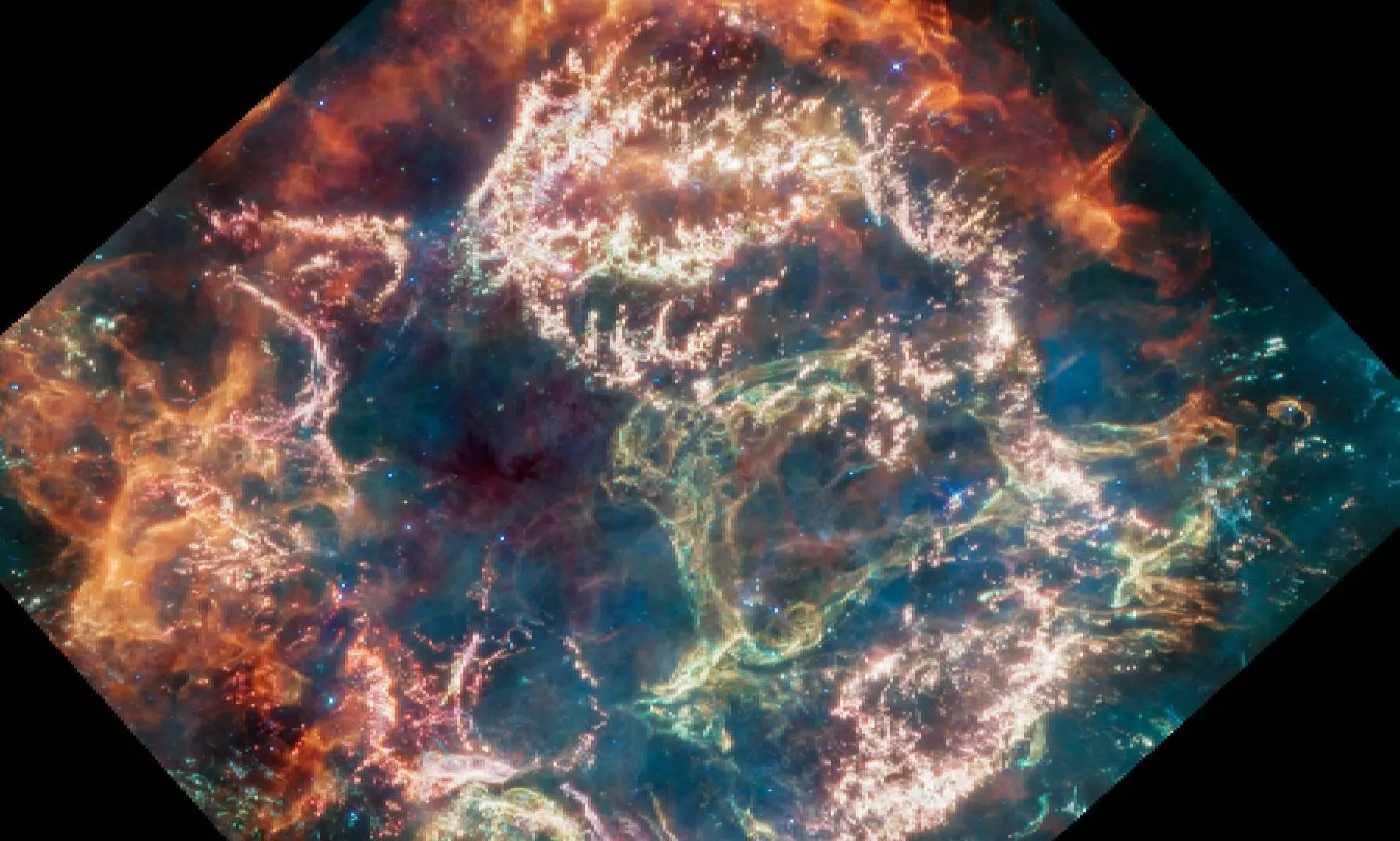
Remnants of a star exploded 340 years ago photographed by NASA
text_fieldsWashington: The James Webb Space Telescope has discovered yet another gem in the sky. The remnants of a massive star that exploded around 340 years ago have been found. The never-seen-before clicks belong to Cassiopeia A (Cas A), which offers unique clues into a star's death.
NASA said that Webb astronomers may learn more about the origins and production of cosmic dust from the remnants of Cas A. The elements we are made of come from cosmic dust. What makes the images special is that they belong to the youngest known remnant from an exploded, massive star in the Milky Way galaxy.
This is not the first time scientists are focusing on Cas A. It belongs to the prototypical type of supernova remnant and has been extensively studied.
The American space agency shared the vibrant image on Instagram and wrote, "Webb’s powerful infrared eye has captured never-before-seen detail of Cassiopeia A (Cas A), the remnant of a massive star that exploded about 340 years ago — from our perspective on Earth. (Despite being 11,000 light-years away, this supernova may have been visible to the naked eye, something that has not been seen in our galaxy since.)"
The caption was titled, "Stars: always making a dramatic exit!"
Describing the image in detail, NASA wrote, "The outer layers of the image (shown in orange) mark where ejected material from the exploded star is ramming into surrounding gas and dust. Within that outer shell is material from the star itself, including elements like oxygen, argon, and neon. What’s that green loop on the right? Scientists are still puzzled over its unexpected shape and complexity."
Another description of the colour and structure of the image said, "a circular-shaped nebula with a complex structure. On the circle’s exterior, particularly on the left side of the image, are curtains of material glowing orange like fire. Interior to this outer shell is a ring of mottled filaments in bright pink, studded with clumps and knots. A greenish loop extends from the upper right of the ring into the central cavity. Translucent wisps of blue, green, and red appear throughout the image."
A press release from NASA said that Cas A is the youngest remnant of a massive star in the Milky Way galaxy known to mankind. "It offers a peek into the supernovae phenomenon and its complexities."
Danny Milisavljevic of Purdue University who read the programme said, "Cas A represents our best opportunity to look at the debris field of an exploded star and run a kind of stellar autopsy to understand what type of star was there beforehand and how that star exploded." "By understanding the process of exploding stars, we're reading our own origin story. I'm going to spend the rest of my career trying to understand what's in this data set," he added.
Co-investigator Tea Temim of Princeton University added that these images provide incredible details that scientists have not been able to access before.























